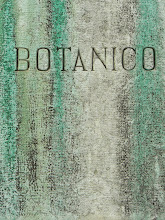 The Jardim Botânico, opened to the public in 1873, has one of the finest collections of botanical specimens in southern Europe. You enter throught a courtyard surrounded by the rather shabby buildings of the Faculdade de Ciências, then descend a flight of stone stairs into a cool, hilly, luxuriant garden of winding paths, boxwood mazes, lily ponds, and streams crossed by bridges and stepping stones.
The Jardim Botânico, opened to the public in 1873, has one of the finest collections of botanical specimens in southern Europe. You enter throught a courtyard surrounded by the rather shabby buildings of the Faculdade de Ciências, then descend a flight of stone stairs into a cool, hilly, luxuriant garden of winding paths, boxwood mazes, lily ponds, and streams crossed by bridges and stepping stones. Set liberally about are benches where you can sit listening to the chaffinches and robins and looking at the stately or surprising trees - jacaranda, giant ficus, frangipani, aruacaria, tipu, cork oak, eucalyptus, olive, and strange Australian and African species with grotesquely twisted trunks or enormous air roots. There are also tree-size camellias and floods of flowers, all neatly labeled.
Along one side runs a grand avenue of magnificent palms, at least 50 different varieties. If you follow this path to its end you'll arrive at the park's second entrance, emerging on the Rua da Alegria just a few blocks from the Avenida da Liberdade and a few steps from the charming little hotel Príncipe Real. If you happen to be staying there, the garden offers a convenient downhill approach.
in Portugal, The Berlitz Travellers Guide, New York, 1993
FOTO: Avenida das Palmeiras. Infelizmente, passados 15 anos sobre esta descrição, já há muitos anos que não corre água nos riachos, o Lago de Baixo está seco e de um modo geral tudo se degradou acentuadamente, incluíndo o património arbóreo.
in Portugal, The Berlitz Travellers Guide, New York, 1993
FOTO: Avenida das Palmeiras. Infelizmente, passados 15 anos sobre esta descrição, já há muitos anos que não corre água nos riachos, o Lago de Baixo está seco e de um modo geral tudo se degradou acentuadamente, incluíndo o património arbóreo.



2 comentários:
Haverá alguma esperança para os jardins botânicos portugueses?
A «esperança» só nós a podemos dar. O problema é que ainda somos poucos a trabalhar para isso.
Enviar um comentário